Corinne Roosevelt Robinson & The 1920 Presidential Election
Oct 22, 2020
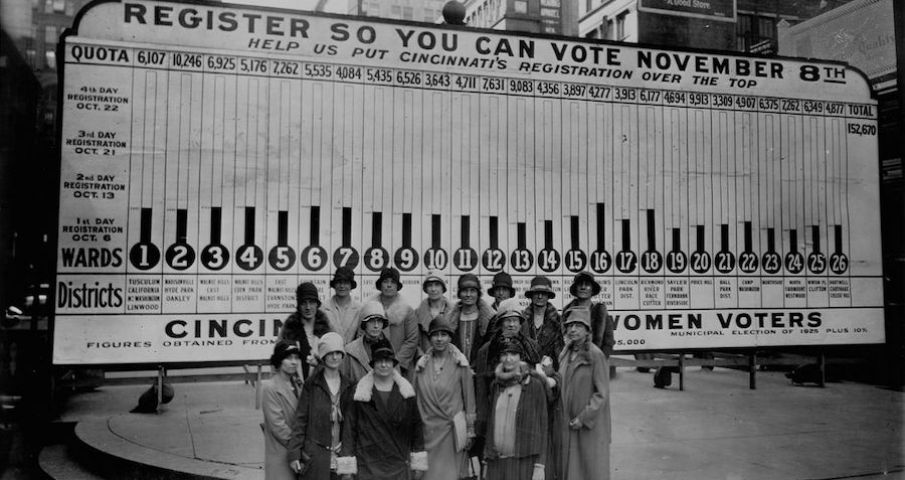
This year marks the centennial passage by Congress of the 19th Amendment, which gave women the right to vote and marked their first-time participation in a presidential election. In honor of these history-making achievements, the Flatiron/23rd Street Partnership highlights the life of political activist, published poet, and Flatiron native Corinne Roosevelt Robinson. She was the first woman to address a presidential convention, and was the younger sister of U.S. President Theodore Roosevelt, a distant cousin of fellow Commander-in-Chief Franklin D. Roosevelt, and an aunt of FDR’s First Lady Eleanor Roosevelt.
Born on September 27, 1861, Corinne was the youngest of four children of businessman and philanthropist Theodore Roosevelt, Sr., and his wife Martha Bulloch. The family’s residence, a three-story brownstone with a backyard, was located at 28 East 20th Street, between Broadway and Park Avenue South. “The first recollections of a child are dim and hazy, and so the nursery at 28 East 20th Street, in New York City, does not stand out as clearly to me as I wish it did—but the personality of my brother overshadowed the room, as his personality all through life dominated his environment,” wrote Corinne in her memoir My Brother Theodore Roosevelt.
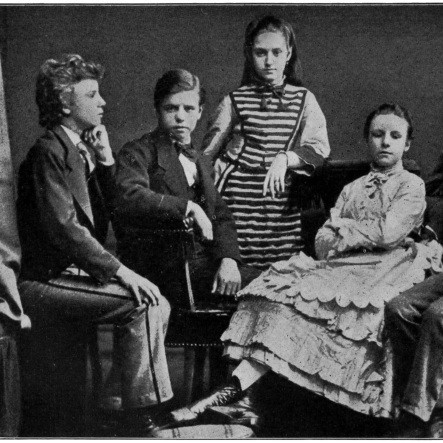
Left to right: Theodore Roosevelt, age 14; Elliott Roosevelt, age 13; Maud Elliott, age 12; and Corinne Roosevelt, age 11. (Photo via My Brother Theodore Roosevelt by Corinne Roosevelt Robinson)
Educated by private tutors and at the exclusive Miss Comstock’s School, Corinne was an aspiring poet and writer. One of her playmates included Edith Kermit Carow, who would become the First Lady and second wife of Corinne’s brother Theodore. Corinne, too, married at the age of 20 to Scottish-born financier and real estate broker Douglas Robinson on April 29, 1882. The couple had four children, Theodore, Corinne, Monroe, and Douglas, and the Robinsons maintained homes in Orange, New Jersey and in the Adirondacks.
In addition to life as a wife and mother, Corinne’s passion for the written word, as well as encouragement from Flatiron friend and Pulitzer Prize-winning novelist Edith Wharton, led to a writing career. Corinne’s first published poem was “The Call of Brotherhood” in 1911. Other published works included One Woman to Another and Other Poems (1914), Service and Sacrifice (1919), and My Brother Theodore Roosevelt (1921).
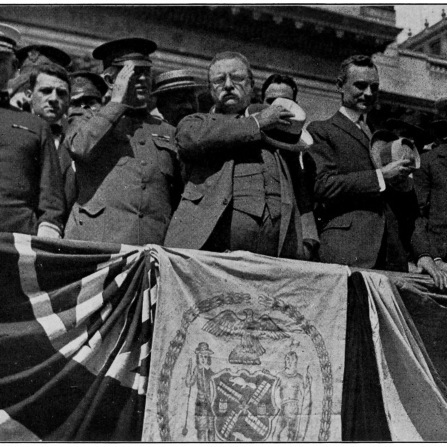
26th U.S. President, Theodore Roosevelt. (Photo via My Brother Theodore Roosevelt by Corinne Roosevelt Robinson)
Corinne greatly admired her brother Theodore’s politics. During Theodore’s tenure as a statesman, she “supported TR’s political aspirations, frequently hosting dinner parties and roundtable discussions in her home,” writes The Theodore Roosevelt Center at Dickinson State University. “Corinne, who made regular visits to the Executive Mansion during TR’s presidency, later commented that she and her brother would frequently engage in all-night discussions.” Corinne was politcally active herself, and reportedly “in great demand as a speaker” for the Republican National Executive Committee.
Corinne was a supporter of the women’s suffrage movement, which led to the June 4, 1920 passage and the August 18th ratification of the 19th Amendment. However, during the suffrage movement, many Black women continued to experience discrimination from white suffragists. In Catherine Rymph’s book Republican Women: Feminism and Conservatism From Suffrage Through the Rise of the New Right, she wrote that the Executive Committee, where Corinne was a member, was all white and that “a black woman, Lethia Fleming of Cleveland, was selected to head a separate black women’s advisory committee that was assembled for the 1920 presidential campaign.”
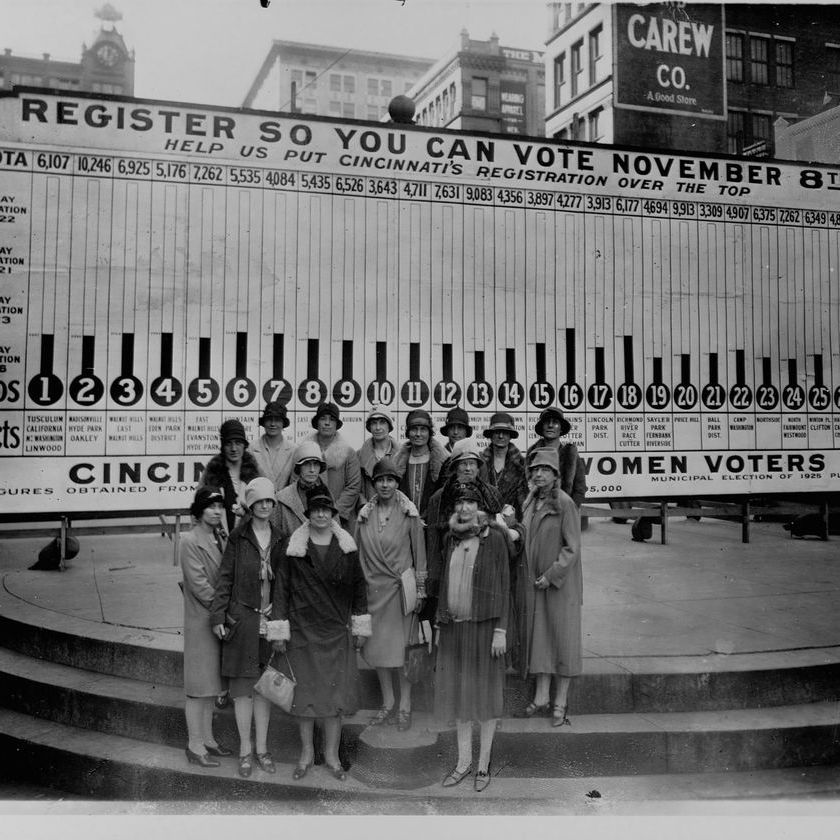
A group from the Cincinnati chapter of the League of Women Voters stands in front of a board showing voter registration by city ward. (Photo by Library of Congress / Corbis / VCG via Getty Images)
With the 1920 presidential campaign underway and just four days following the passage of the 19th Amendment, the Republican party commenced their nearly week-long presidential nomination convention in Chicago. Here, Corinne became the first woman called upon to second the nomination of a national party convention candidate. She nominated U.S. Army Major General Leonard Wood, who served as Chief of Staff of the U.S. Army during Theodore’s administration, to head the top of the Republican team’s ticket. The delegates, however, decided to go with Ohio Senator Warren G. Harding, who later won the presidential election along with vice presidential choice Calvin Coolidge on November 2, 1920, defeating Democratic opponent James M. Cox and his running mate and Corinne’s cousin, Franklin D. Roosevelt.
“Suffragettes, such as Corinne Roosevelt Robinson…adamantly promoted support for the Republican candidates,” notes the Harry S. Truman Library & Museum. And many “Republicans saw a chance for millions of new voters to turn out at the polls supporting the Republican ticket of Warren G. Harding and Calvin Coolidge.” That election year, “more than 8 million women across the U.S. voted in elections for the first time”.
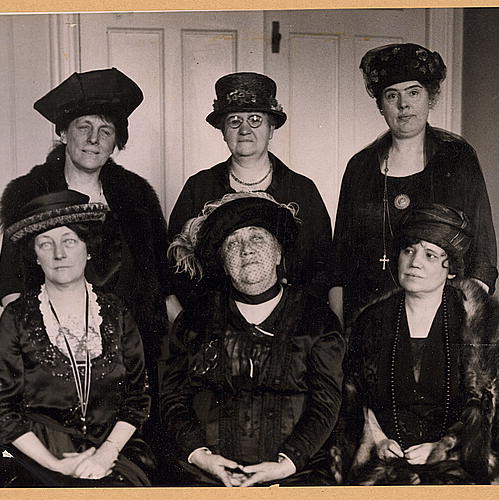
Corinne Roosevelt (top left) at the 1920 Republican Convention. (Photo by Underwood Library of Congress)
After the 1920 election, Corinne retained an active role in Republican politics, which included an advisory committee post during presidential candidate Calvin Coolidge’s campaign. She also later worked with nonprofit organizations such as the American Red Cross and the Salvation Army. According to the New York Times, Corinne had formed the New York City Committee for Fatherless Children of France and served as the group’s temporary chairman and also its secretary.
However, with failing health, which included 16 eye surgeries, Corinne withdrew from her work as a political and nonprofit advocate. She died of pleural pneumonia at her Upper East Side home at the age of 71 on February 17, 1933. In her poem Life, A Question, Corinne shared these words on the subject: “Life? and worth living? Yes, with each part of us–Hurt of us, help of us, hope of us, heart of us. Life is worth living.”
Header Photo Credit: Library of Congress / Corbis / VCG via Getty Images
Thumbnail Photo Credit: Underwood Library of Congress







